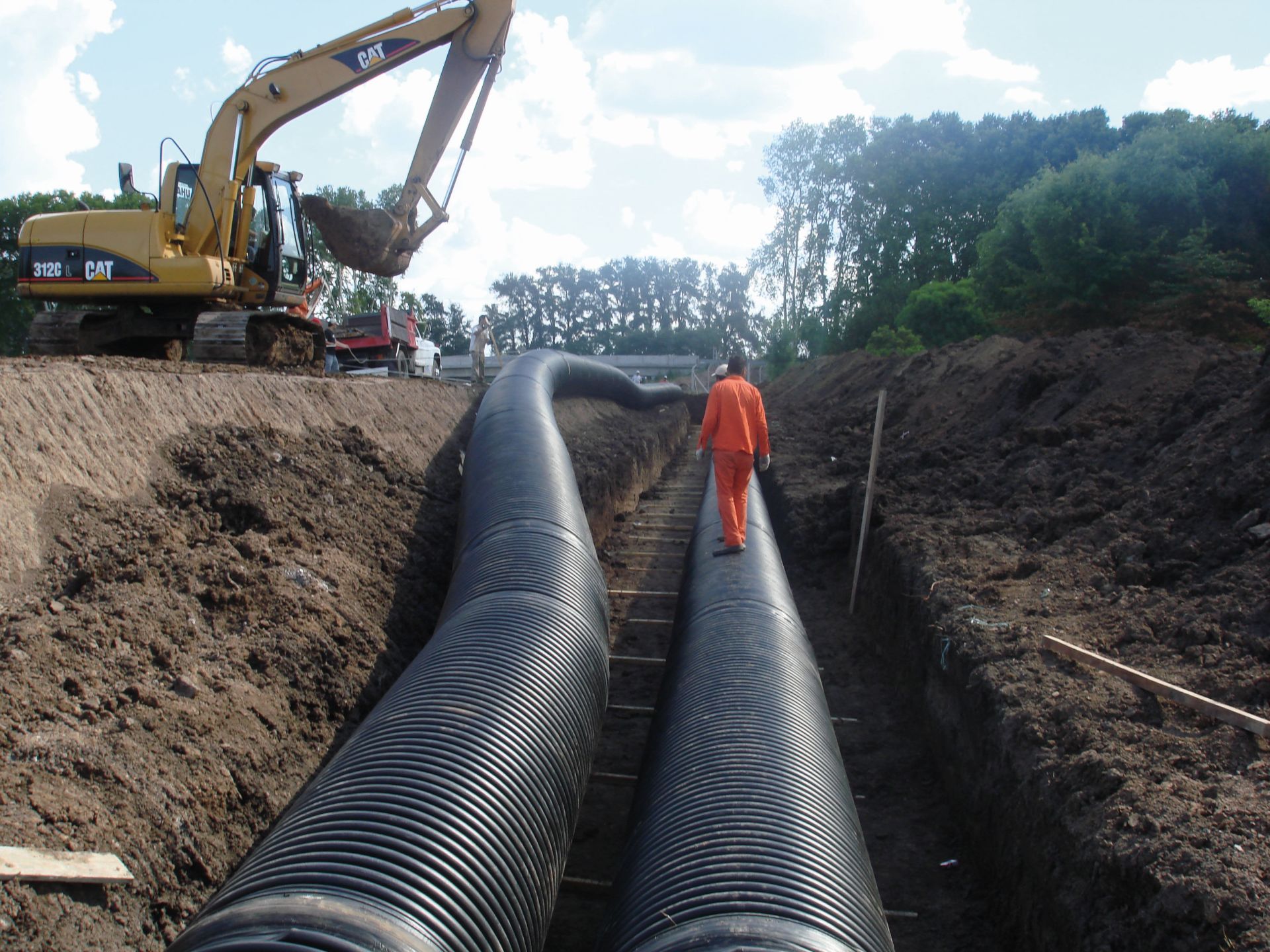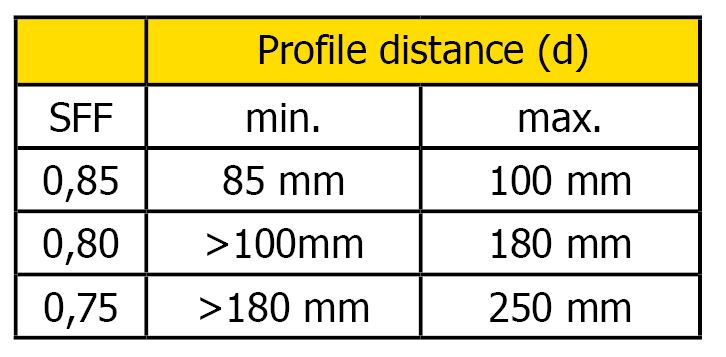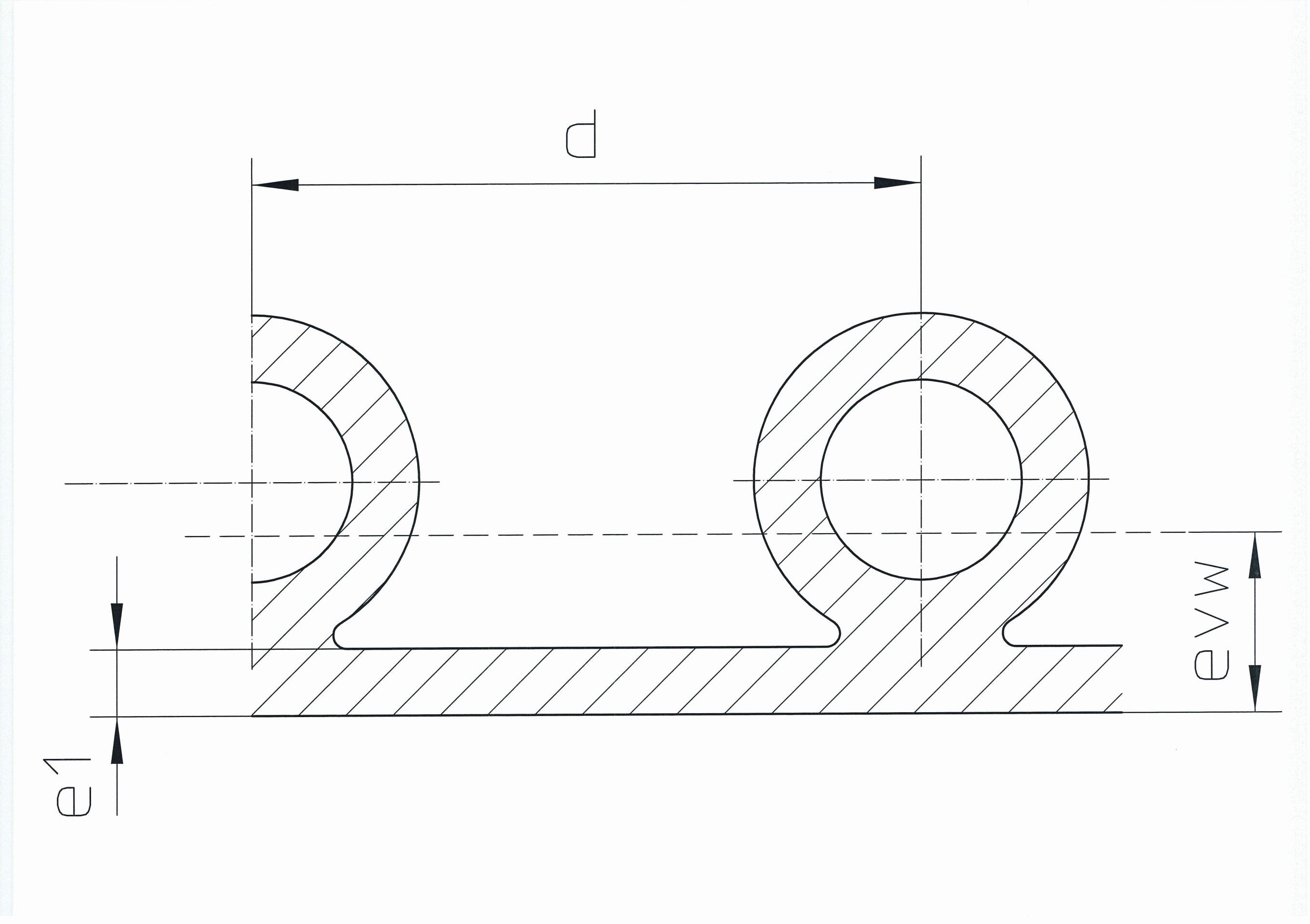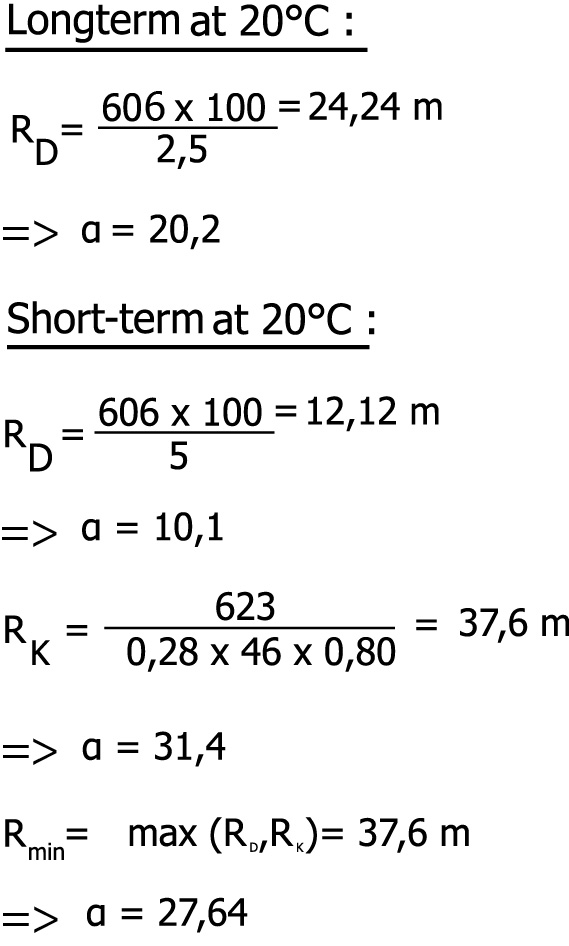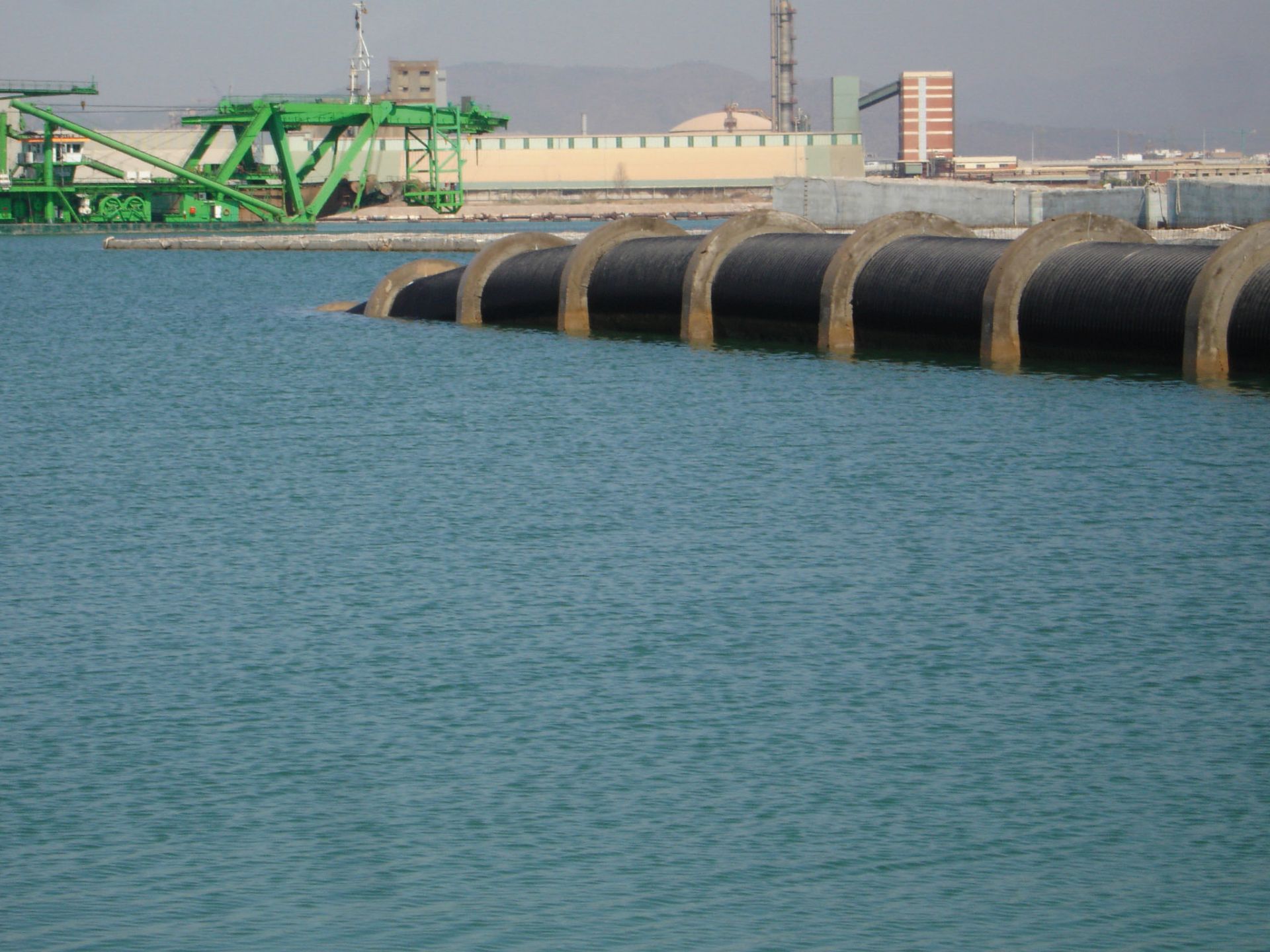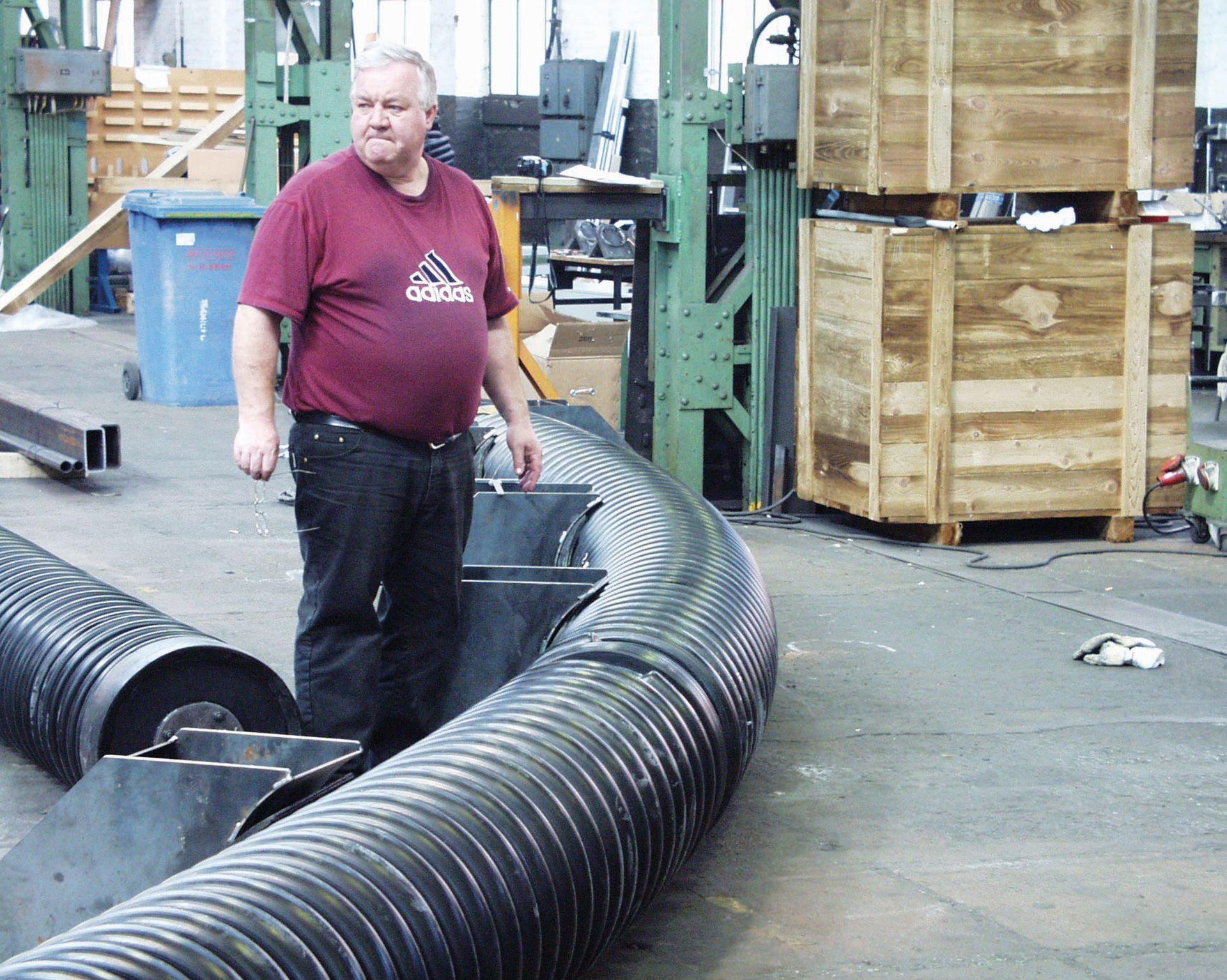Bending and curving of Krah Pipes
The high flexibility is already very known for Krah-Pipes, and a basic reference for the bending is given by R=50 x DN/ID for long term and even R=25 x DN/ID for short term.
So technically these two cases have to be diveded, in long and short term examination. The long term is to reduce fittings (bends) and the shirt term aspect is during the installation e.G. using the S-sinking method in water applicaitons, relining. What is a easy way to make a detailed calculation, to be sure that the pipe will not fail. How to calculate the minimum bending radius for a Krah-Pipe with profiled wall structure, in helical style?
|
|
Rmin = α x DN [mm] Rmin = minimum bend radius [mm]α = bend ratio [-]DN/ID = Nominal pipe diameter, here inside pipe diameter [mm] The minimum bend radius is defined as the smallest radius to which the pipe may be safely curved. A maximum of total strain elongation should not exceed: |
 Photo 2: Long-term conditions, of a bended Krah Pipe DN/ID 1300 mm |
Strain of the outer fiber
ra = Outer radius
e1 = Solid waterway wall thickness [mm] e1 = Solid waterway wall thickness [mm] ɛ = Permissible strain of outer fibre [%] |
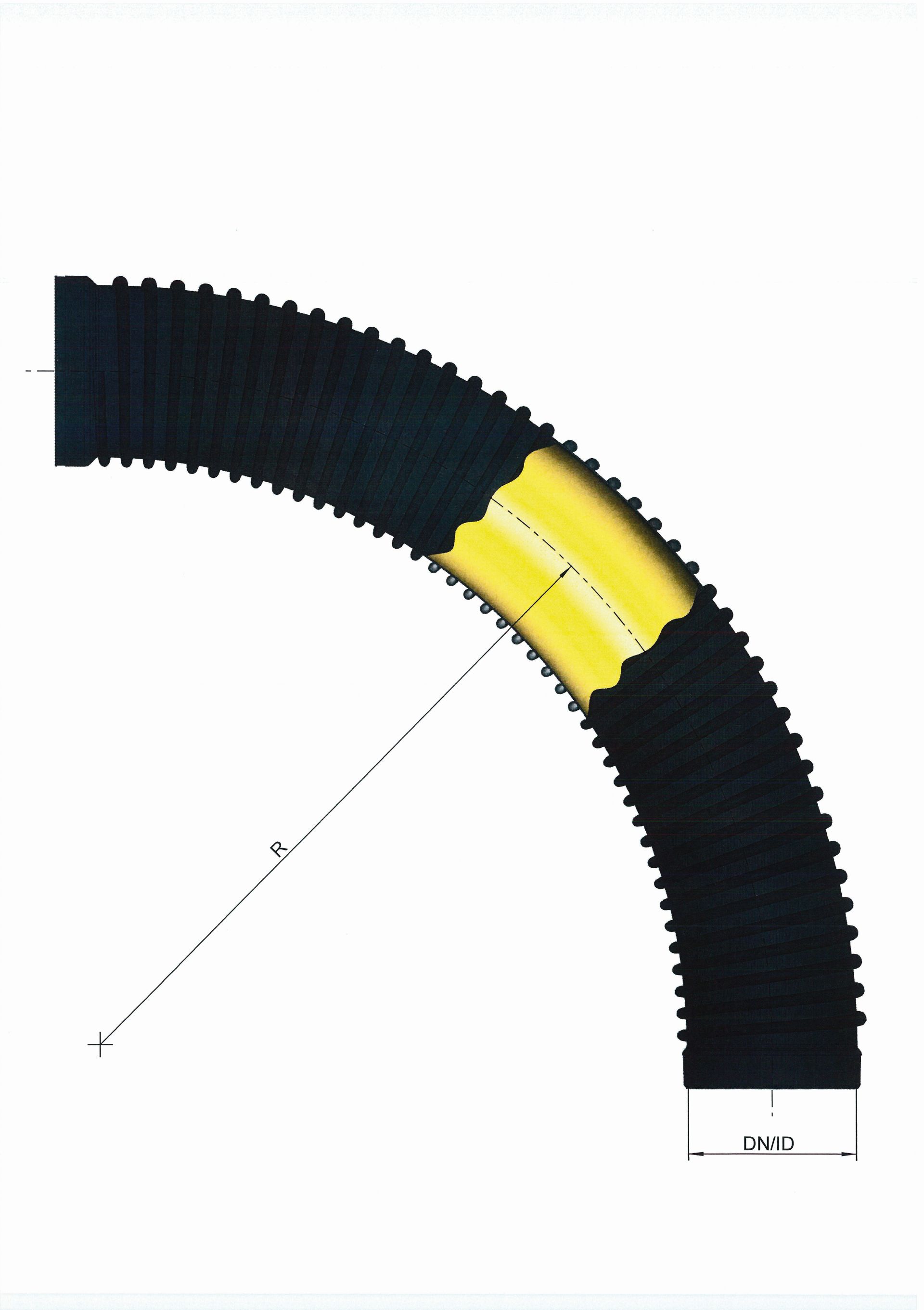 Sketch 2: Principle of a Krah pipe bending Sketch 2: Principle of a Krah pipe bending |
Local Buckling RK= Minimum bending radius due to buckling [mm]
rm = Medium pipe radius rm = SFF= Spiral-factor [-] |
|
Spiral-factor: The spiral-factor (SFF) is a factor of the equivalent solid wall reduction for Krah Pipes. The spiral factor for other profile distances are available on request. Result: The minimum bending radius is the maximum of RD and RK. This mathematical approach can be used for corrugated pipes with ribs. |
|
|
Sample Calculation:
The minimum bending radius for this pipe is 37,6 m for long and short-time at 20°C. |
|
Author:
Alexander Krah
CEO Krah Pipes GmbH & Co. KG
